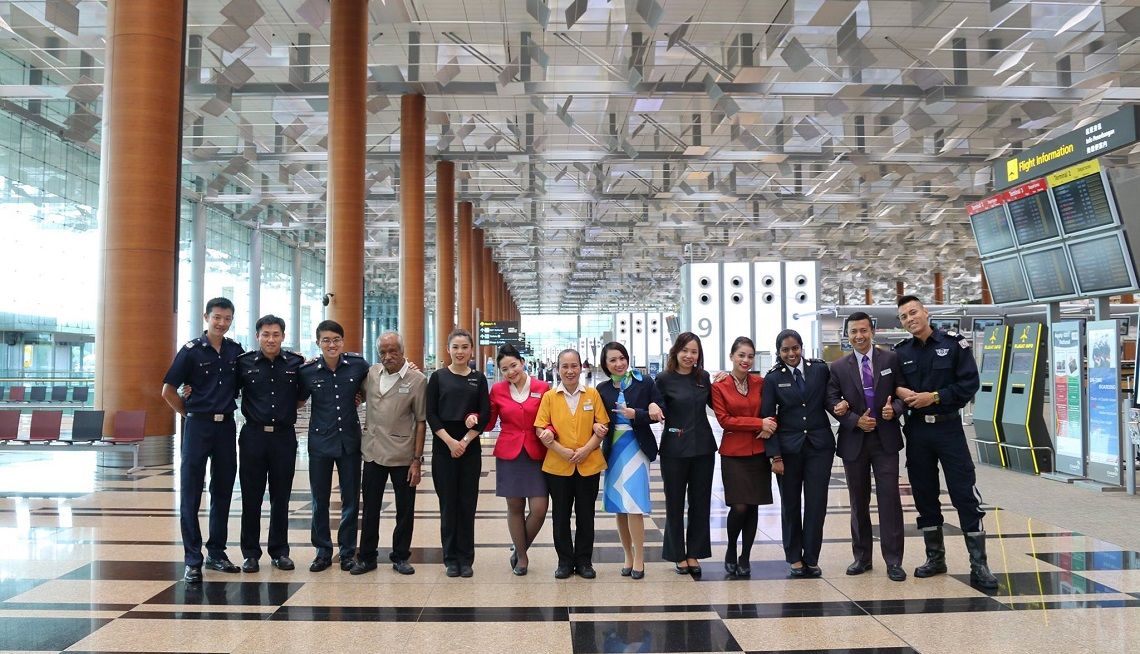How Changi Airport is inspiring Singapore’s hospitals
By Sam Johnston
A new innovation lab is exploring emerging technologies in healthcare and government, writes Sam Johnston from DXC Technology.

Image: Changi Airport/Facebook
Design and technology have helped the airport turn an often-frustrating experience into a painless, efficient and award-winning one. At a new innovation lab in Singapore, we are learning from the approaches used by Changi Airport to re-design patients’ experience at clinics and hospitals.
We are only scratching the surface of what is possible - and we at DXC Technology have launched a lab to innovate, create, and push the envelope. The Digital Innovation Lab at our Asia headquarters in Singapore will be an incubator for new ideas and prototypes in healthcare and beyond.
AI for antibiotics
The Digital Innovation Lab enables us to co-create with our customers and partners in the region, aided by AI and machine learning, 3D printing, virtual and augmented reality, robotics, and many other emerging technologies.
What does this co-creation look like in practice? The lab showcases our new ‘digital design process’, where we borrow industry best practices from exceptional companies, such as Singapore’s Changi Airport, and from within DXC itself. This is essentially a combination of design thinking, UX design and agile methodology.
Our process allows healthcare providers, for instance, to apply approaches from one of the world’s best airports to a diabetes clinic. One key component is to break down a patient visit into different stages. You can then quickly identify little changes at each stage to make the overall process more efficient and pleasant for both doctor and patient.
We have been building tools at the lab to help with this. In one project with the Singapore General Hospital, we are looking at how artificial intelligence can help doctors prescribe the right dosage of antibiotics. Currently, manual audits of antibiotic prescriptions can take days - and once complete, it is often too late to change to a better course of antibiotics, even if one is identified.
With AI, doctors can reduce the impact of antibiotic resistance, but also increase the efficacy of these drugs. This solution was recently recognised as one of the most impactful projects by Ministry of Health of Singapore at the National Health Tech Challenge awards.
Augmented reality
Meanwhile, we have built an augmented reality system to display electronic medical records. Doctors could use their devices to pull records up while in consultation with a patient, making it easier for both of them.
This could make a huge difference to both improving the security of the records and reducing errors. Improving security because we could use patients’ biometrics such as fingerprints or facial recognition to ensure doctors cannot access records without permission. This identity check will also cut the chances of pulling up the wrong patient’s records, which can cause very serious damage.
Meanwhile, our lab is using robotic process automation to empower patients to complete basic testing themselves without having to visit a clinic. Let’s look at how flat-footedness is diagnosed: patients would have to go into a clinic and get their feet measured, while the podiatrist carries out manual calculations.
We have developed a solution that uses computer vision to analyse pictures of patients’ feet and predict the risk of flat foot or high arch issues. We essentially put an entire clinic visit to a podiatrist onto an app.
We are continuing to explore the possibilities in robotics at the lab. We could soon start encountering customer service robots at hospitals, which can take vital signs and perform basic tests. They can also identify each patient and make decisions based on their condition, speeding up the visit. This could dramatically improve customer service while reducing the cost of providing that service and cut the risk of misdiagnoses.
Robots and quantum computers
Healthcare is just one aspect of what we do at the lab. We are innovating in exciting ways in manufacturing, insurance, and financial services as well. And every few months, we will delve into new sectors.
Imagine a bank staffed by humanoid robots: certainly sounds futuristic, but it is now a reality.Imagine a bank staffed by humanoid robots: certainly sounds futuristic, but it is now a reality. These robots use computer vision to quickly identify the demographics of customers and their existing product portfolios. This data can help the bank to deliver customised sales and support.
The lab looks at technologies that are only starting to emerge on the horizon. For instance, we have a dedicated team testing the potential of quantum computing. This technology could help predict the effects of climate change or give researchers a greater understanding of how cancer develops in the body.
While still in early stages, and quite energy-intensive and costly, quantum computing is nevertheless extremely promising: Microsoft has identified quantum computing one of the three most important technologies to the company’s future.
It’s been just three weeks since we launched the Digital Innovation Lab, built with support from the Economic Development Board of Singapore. But there are already some exciting new tools coming out of our newly-launched lab and coming to a hospital near you.
This post is authored by Sam Johnston, Global Director of Labs at DXC Technology.